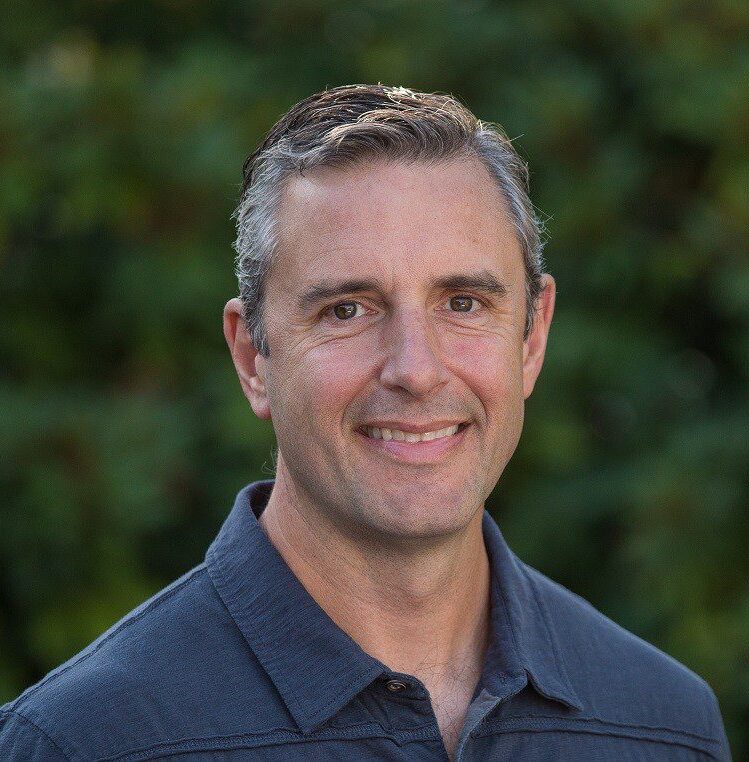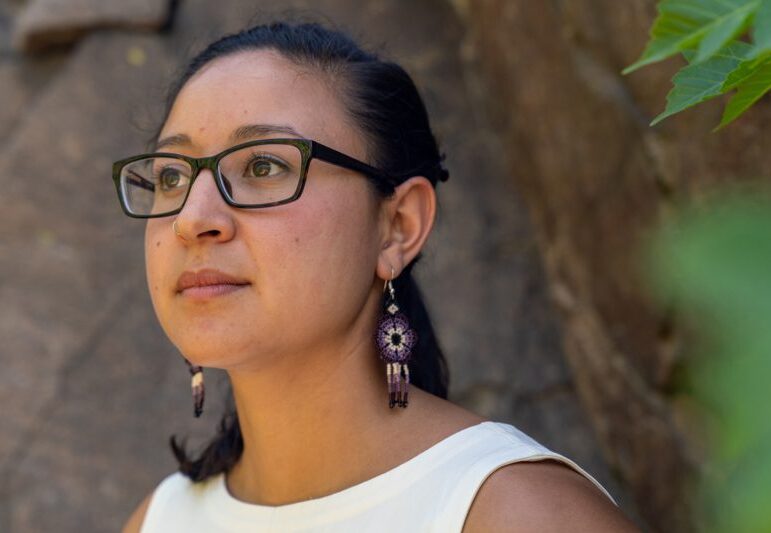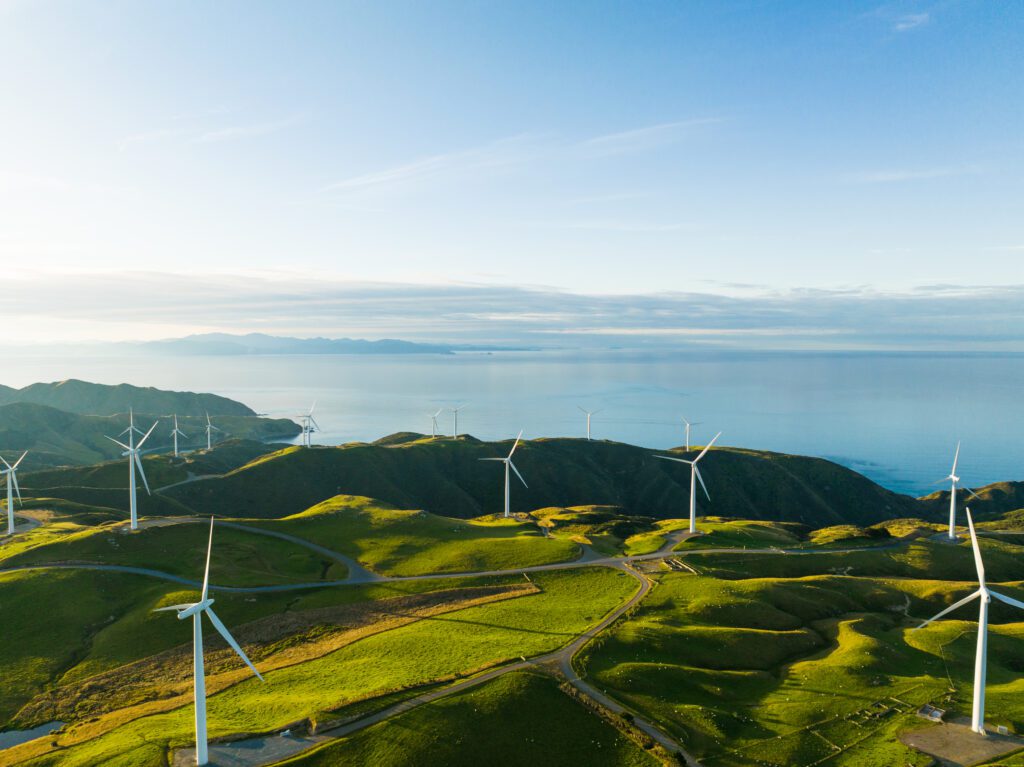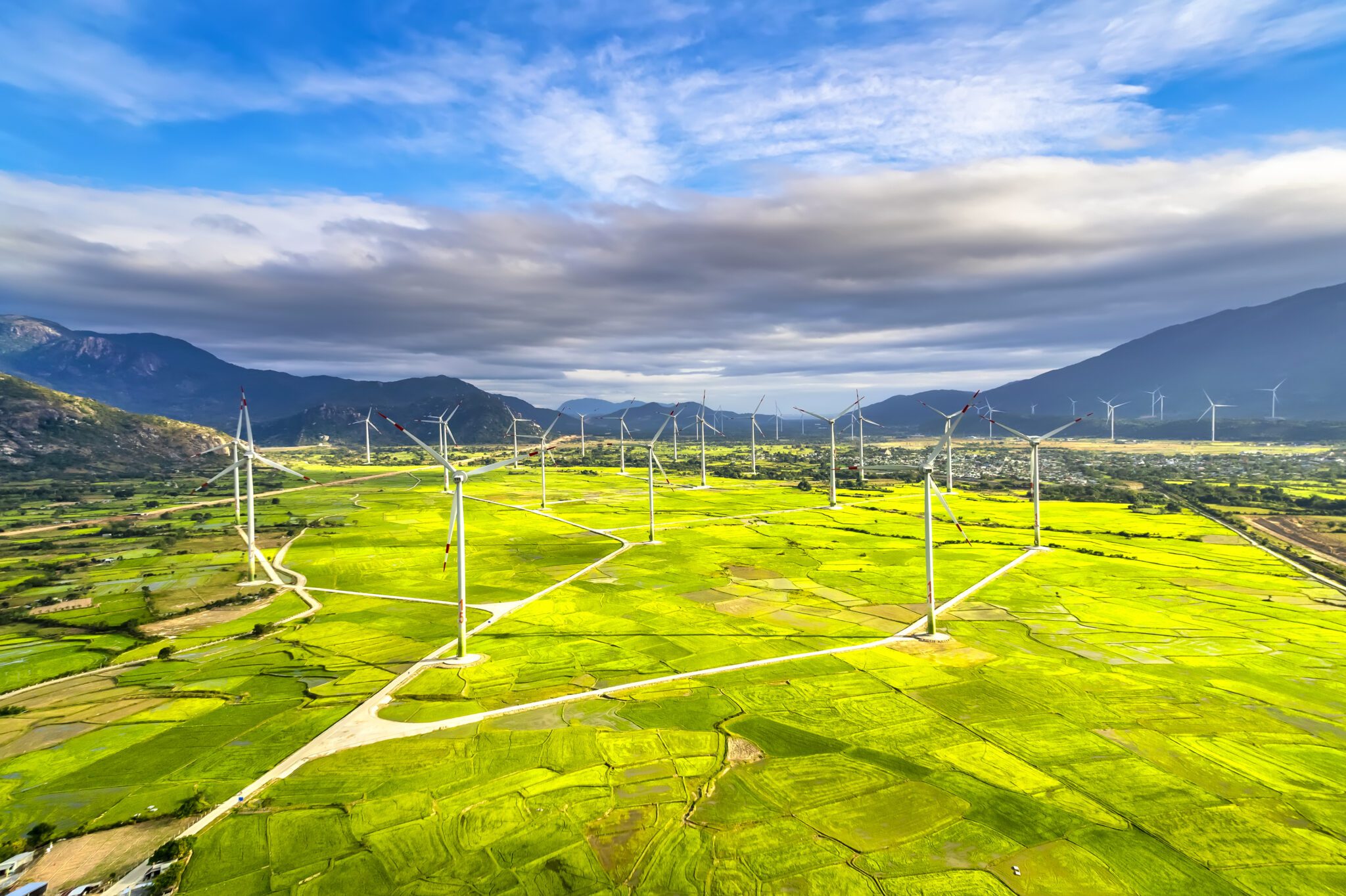Este Mes Nacional de la Herencia Hispana, estamos celebrando líderes de la comunidad hispana que contribuyen a la misión de Outdoor Foundation Thrive Outside. Estos individuos continúan a formar espacios al aire libre que son inclusivos, equitativos y diversos. Lea nuestras entrevistas con estos líderes a continuación.
Gabaccia Moreno, Outdoor F.U.T.U.R.E. Initiative y Outdoorist Oath
¿Por qué es importante el liderazgo hispano en los espacios al aire libre?
Como todas las iniciativas de diversidad, el liderazgo hispano y la participación en espacios al aire libre hace que estos lugares sean mejores. Nuestro patrimonio es parte del tejido de nuestra sociedad y así debe ser incluido, representado y celebrado en todas las áreas de nuestras vidas. También, es un recordatorio esencial que siempre hemos sido parte de estos espacios porque la naturaleza siempre ha sido parte de nosotros, para sustento, trabajo y ocio. Nuestras culturas siempre han sido en relación con la naturaleza a través de y a pesar de colonización.
¿Cómo empezaste a trabajar en el área de acceso equitativo al aire libre?
La respuesta corta es mi familia. Yo estaba muy privilegiada a crecer entre cazadores y pescadores. Pero al final, lo que me llevó a una carrera con conneccion al aire libre es la relación que formé con la naturaleza a lo largo del camino. Viendo la naturaleza desaparecer alrededor de mí o siendo extraída o destruida, inicio una pasión e una responsabilidad en mí. No pude estar sentada, viendo como sucede todo. Cuidar de nuestro planeta no debe ser una pregunta. Debe ser una norma para todos, y espero que puedo inspirar a la gente a perseguir sus propias relaciones con la naturaleza para que todos puedan cuidar de nuestra casa compartida. Por un lado más brillante, estar en la naturaleza me da esperanza y propósito. Me hace sonreír y me muestra lo que soy capaz de hacer mas allá de las maneras coloniales o capitalistas. Cuando estoy en la naturaleza, me siento valorada simplemente por existir.
¿Cómo se ve la equidad de acceso al aire libre para la comunidad latina?
Se ve como cada niño y adulto tienen la oportunidad de crear recuerdos significativos en la naturaleza, sentirse seguro y bienvenido al estar afuera. Tener acceso al equipo que hace las aventuras afuera mas accesibles y mejor. Y tener acceso a diferentes relaciones recíprocas que se puedan tener en la naturaleza (desde el placer hasta la supervivencia).
¿Cuál es tú visión de un espacio al aire libre ideal?
Mi espacio al aire libre ideal honora las maneras ancestrales de existir. Es un lugar donde la naturaleza no sea extraída por dinero, pero tratada como un pariente, y donde todos pueden mostrar gratitud por lo que ella nos proporciona. Es un espacio donde cada ser es valorado por existir.
Christian Vargas, Boulder Thrive OUtside
¿Por qué es importante el liderazgo hispano en los espacios al aire libre?
Liderazgo hispano en los espacios al aire libre es importante para que nuestra comunidad puedan ver alguien que se parece a ellos y habla el mismo idioma, lo que puede proporcionar una manera de formar conexión, confianza y comunicación. Niños y familias se verán representados en áreas que tradicionalmente han sido subrepresentadas. También, líderes hispanos en espacios al aire libre tienen un entendimiento de barreras, necesidades y deseos que la comunidad hispana ha experimentado. Esto crea una comunidad más fuerte que sea más consciente de las diferentes oportunidades que existen para participar en actividades al aire libre. Además, podemos crear un espacio donde el acceso a actividades al aire libre y conexión a la naturaleza es diverso, equitativo, y donde todos se sientan incluidos. Inspirando liderazgo hispano es esencial para continuar de educar, conectar y activar comunidades latinas a participar en actividades al aire libre.
¿Cómo empezaste a trabajar en el área de acceso equitativo al aire libre?
Creciendo en Costa Rica, tuve varias oportunidades para tener una conexión fuerte con la naturaleza, desde plantas, hasta frutas, los insectos, los pájaros, el clima, las montañas, la selva tropical, a los ríos, a los océanos. Yo entendí la importancia de la naturaleza y del aire libre para todos nosotros. ¡Es la medicina perfecta! El disfrute de conectar con la naturaleza y el aire libre e interminable oportunidades de tener diferentes aventuras siempre me inspiró a compartir esto con otros. Los Servicios de Parques Nacionales en Costa Rica y Los Estados Unidos tienen mucho que ver con esto. Yo quería compartir mi amor para el aire libre y experiencias con los demás.
El impacto colectivo implica colaboración entre socios. ¿Cuál es tu papel en Thrive Outside? Cuéntame sobre tu organización.
Mis responsabilidades principales en Thrive son para conectar jóvenes desfavorecidos y familias con experiencias al aire libre memorables y para compartir estrategias y colaborar con otras comunidades dentro de este programa colectivo.
Soy el director de participación comunitaria para Thorne Nature Experience y el Nature Kids/Jóvenes de la Naturaleza (NKJN) colectivo para las ciudades de Lafayette, Boulder, y Longmont. NKJN es un proyecto de impacto colectivo de 5 años y de 10 millones de dólares diseñado para conectar a los jóvenes desfavorecidos de Lafayette, Boulder, y Longmont con la naturaleza y las actividades al aire libre. Estos programas son para pre-escolar hasta la escuela secundaria y desde el patio de la casa hasta las montanas, integrado para toda la familia. Tienen oportunidades para capacitación profesional y empleo remunerado. Además, tenemos unos proyectos de construcción para garantizar que todos los jóvenes de Lafayette viven dentro de un camino seguro a diez minutos para llegar a un espacio natural.
¿Cuál es tú visión de un espacio al aire libre ideal?
Es un lugar donde todos puedan disfrutar acceso equitativo a nuestros parques nacionales y espacios al aire libre. Un ambiente inclusivo que une las brechas culturales, fomenta la comunidad, y que sea acogedor para todos. Hay educación y conocimiento sobre todos los beneficios de una forma de vivir conectada al aire libre se pueda dar. Este espacio puede inspirar los jóvenes y sus familias a explorar y conectar con la naturaleza. Puede ser un lugar que rompe las barreras, para nuestras comunidades hispanas a valuar y respectar la tierra, un sentido de pertenencia. Además, es una oportunidad para que la comunidad Latina puede reconectar en la preservación de nuestra herencia cultural y que genera un futuro donde más gente como yo puede considerar carreras y caminos en la vida en el área del aire libre, igual como usar lo recreativamente para pasar esta apreciación de la naturaleza a generaciones venideras.
Gabriela Monge-Escalante, Boulder Thrive Outside
¿Por qué es importante el liderazgo hispano en los espacios al aire libre?
Para generar un futuro más inclusivo y sostenible para generaciones latinas venideras.
Estos líderes son importantes para latinos porque ayudan a nuestras comunidades a disfrutar los beneficios de la naturaleza, en un ambiente en que muchas comunidades de color viven en espacios con pocos o cero parques y espacios verdes.
¿Cómo empezaste a trabajar en el área de acceso equitativo al aire libre?
Durante la pandemia, leí un artículo que decía que gente de color son entre 67% y 74% más probable a vivir en un área que se define como “privado de la naturaleza,” que son áreas donde una alta proporción del espacio natural ha sido perdido por causa del desarrollo humano. Miré a mi alrededor, estaba rodeada de montañas, pero sabía que no podría llegar a estas montañas y sus actividades al aire libre sin pagar un costo alto. Entonces, decidí buscar un trabajo voluntario que, como madre soltera, puede darme la oportunidad a encontrar recursos para matricular a mis hijos en actividades con una organización que nos miraría como gente de color y nos daría las mismas oportunidades como los otros. Encontré Thorne, a través del departamento de Nature Kids/ Jóvenes de la Naturaleza (NKJN), me sumergí en este trabajo. Mi primer pensamiento fue si mis niños, desde pocos años, no eran expuestos a espacios verdes. ¿Cómo van a seguir una carrera enfocada en la naturaleza? ¿Cómo van a conservar y amar la naturaleza y cuidar de nuestro medio ambiente?
El impacto colectivo implica colaboración entre socios. ¿Cuál es tu papel en Thrive Outside? Cuéntame sobre tu organización.
No hay nada como promover la cooperación y colaboración para alcanzar a una sociedad más participativa, involucrada y comprometida. En NKJN, a través de la organización central Thorne Nature Experience, tenemos más de 20 socios. Si hay algo que la naturaleza nos puede enseñar, es que nosotros necesitamos trabajar juntos para el bien común. La naturaleza funciona de una forma correcta cuando todos los elementos participan en el ecosistema. Estos elementos son nuestros socios. Nuestro departamento NKJN, a través de Thorne, tiene impactado gente que históricamente no tenían acceso a la naturaleza o que no podían caminar con libertad en nuestra ciudad. Nosotros hemos cambiado e impactado vidas de niños, jóvenes, hombres, y mujeres.
¿Cuál es tú visión de un espacio al aire libre ideal?
Tener una Naturaleza para Todos, sin máscaras, sin barreras…para TODOS, donde hombres y mujeres, gente blanca, gente de color, gente biodiversa, etc., independientemente de su condición biológico, pueden tener una relación armoniosa con la naturaleza. De la misma manera, la distribución y acceso a sus recursos y beneficios, y el impacto de su deterioro, debe ser justo también.
José González, Latino Outdoors
¿Por qué es importante el liderazgo hispano en los espacios al aire libre?
La respuesta corta es que la “Latinidad” es parte de la experiencia Americana. Nuestra diversidad es parte de todo y el liderazgo viene con la responsabilidad a nuestras propias comunidades junto con el tapiz comunal. Somos parte de la vibrante diversidad social que contribuye al bienestar del todo, así como la biodiversidad es fundamental para la salud del paisaje ecológico. Y la realidad es que la demografía de 2050 va a ser muy diferente a la de 1950, y el liderazgo debe reflexionar esto también.
¿Cómo empezaste a trabajar en el área de acceso equitativo al aire libre?
Hay una respuesta sencilla y una mucha más larga y sinuosa. La respuesta sencilla es que me enganché al aire libre y estaba curioso sobre, “¿Dónde están otros como yo?” La ruta más sinuosa es como un río trenzado, con unas experiencias fundamentales que incluyen mi niñez en México rural y en el Valle Central de California con unas experiencias al aire libre muy diferentes pero conectadas. Y mientras que yo navegaba mi propia orientación cultural (volverse “latino” llegando a los EE. UU.), encontré que espacios al aire libre me proporcionó una oportunidad para navegar esta parte de mi identidad también.
¿Cómo te parece el acceso equitativo al aire libre para la comunidad latina?
Cuando comencé este trabajo, nosotros diríamos algo como, “No dejes nuestra cultura al comienzo del sendero.” Lo que significa que de repente tendríamos que ser diferentes, porque estamos en el aire libre. No tenemos la ropa adecuada, no tenemos la comida correcta, o no nos conectamos con el paisaje en una manera adecuada, y demás. Y eso sigue siendo cierto. Pero no quería que nuestra comunidad sea objetos de programación, quería que fuéramos reflexionados en el liderazgo del espacio. Para ser los recipientes y contribuyentes para incorporar y dar cuenta de la equidad para la igualdad por la que luchamos y hacer esto en la política, financiación pública, con líderes electas, y demás. Y que el aire libre sea tan dinámico como nuestro cambio de código Spanglish y cultura evolucionando porque somos parte de ella.
¿Cuál es tú visión de un espacio al aire libre ideal?
Quiero decir que el aire libre ya es ideal. Pero la realidad es que por un lado es una construcción social de nosotros, así tenemos la oportunidad para participar en lo que es y lo que significa. Por el otro lado, la tierra no existe independiente de nosotros. Ella es impactada por nuestras decisiones, desde el cambio climático hasta lo que es considerado “protegido” y en qué forma y por qué. Líneas en el mapa tienen consecuencias, junto con las decisiones de la gente que en el área de política. Así, quiero decir que mi visión para un aire libre ideal es un lugar que sea apoyado y cocreado por una sociedad diversa y próspera como la tierra misma. “Pa delante, siempre pa delate”.
Chela Garcia Irlando, Directora Ejecutiva de la Next 100 Coalition
¿Por qué es importante el liderazgo hispano en los espacios al aire libre?
Liderazgo latino es tan importante porque lo ejemplifica que siempre habíamos tenido una conexión a la naturaleza, administración de la tierra, y conocimiento de la reciprocidad y los beneficios a la salud que reuniendo y pasando tiempo al aire libre pueda dar. La población latina y su influencia en los Estados Unidos solo continua a crecer, y así, nuestro liderazgo ahora es tan importante para establecer la fundación de infraestructura, política, y planeamiento para ser inclusivo, relevante culturalmente, y para reflejar la diversidad que existe adentro de las comunidades latinas a través del país.
¿Cómo empezaste a trabajar en el área de acceso equitativo al aire libre?
No estoy seguro si había un momento específico que me llevó a trabajar en esta área, sino más bien una pasión de toda la vida por retribuir a mi comunidad, honrando la conexión de mi familia y mi cultura con la naturaleza, y utilizando mis conocimientos y experiencias para generar cambio sistemático para las generaciones futuras. Hay pequeños momentos que se han quedado conmigo durante este camino, como recolectar nueces en nuestro patio delantero cuando era niña, montando bicicletas con mis hermanos desde que las luces de la calle se encendieron, aprendiendo a hacer montañismo y escalada en rocas siendo adulto, y decidiendo a obtener un título de posgrado en planificación ambiental. Todas de estas experiencias han tenido un impacto acumulativo y clarifican el enfoque no lineal que nuestra área de trabajo debe comprender y seguir mientras que estamos involucrando a las comunidades que han sido históricamente excluidas del disfrute y protección que ofrece la naturaleza y el aire libre.
¿Cómo te parece acceso equitativo al aire libre para la comunidad latina?
Como la geografía y el paisaje sociopolítico a través del Estados Unidos son diversos, así también son las comunidades latinas a través del país. Nuestras comunidades son étnicamente, lingüísticamente y socioeconómicamente diversas con oportunidades únicas y desafíos para el acceso al aire libre. En mi opinión, el acceso equitativo al aire libre es un proceso más que un resultado y realmente se debe tomar encuenta las consideraciones locales y culturales de cada comunidad. Participación a largo plazo, solicitación de perspectivas, inversión en liderazgo local y infraestructura al aire libre, y asistir a eventos constantemente son solo algunos ejemplos de cómo generar acceso equitativo para la comunidad latina.
¿Cuál es tú visión de un espacio al aire libre ideal?
Mi visión de un espacio al aire libre ideal es un lugar donde todas las comunidades tienen acceso para disfrutar y proteger la naturaleza, con el disfrute comunitario conectado a actividades económicas no extractivas al aire libre. Es un lugar donde todos sienten acogidos, seguros, y representados, con diversas culturas e historias reconocidas y celebradas, donde todas las formas de disfrutar la naturaleza son valoradas.
Amy Dominguez-Arms, Outdoor Foundation Juna Directiva
¿Por qué es importante el liderazgo hispano en los espacios al aire libre?
Nuestro Informe de Participación al Aire Libre revela que latinos y otra gente de color tienen menos probabilidades a pasar tiempo al aire libre por varias razones. Sabemos que la gente siente acogedora en espacios donde pueden ver otros como ellos. Entonces, viendo otros latinos participando en actividades al aire libre, como ciclismo, senderismo, o escalada de roca, por ejemplo, así como ampliando el acceso para otros, puede ayudar a crear un sentido de pertenencia para todos en el aire libre.
¿Cómo empezaste a trabajar en el área de acceso equitativo al aire libre?
Soy afortunada que tiempo al aire libre fue importante para mis padres. Mi madre, como creció en el Este de Los Ángeles, no experimentó las actividades al aire libre hasta que conoció mi padre, pero entonces se dio cuenta de lo mucho que prospera al aire libre. Así que, desde que tuve pocos años, nuestras vacaciones familiares siempre consistieron en viajes con mochila o ir a campar. Sabiendo los enriquecedor que es para mí el tiempo al aire libre, me he dedicado mi tiempo como voluntario a expandir el acceso al aire libre para más gente, particularmente los que vienen de comunidades que se enfrenten barreras, ya sea por el transporte, costos de equipamiento, o el sentimiento que no se pertenece a esos espacios.
¿Qué es lo que le entusiasma de la Outdoor Foundation y de su rol como presidente de la Junta Directiva?
Estoy emocionada por lo que es posible cuando las comunidades se juntaron para aprovechar sus recursos locales y programas para asegurar que más niños y jóvenes pueden pasar tiempo de calidad al aire libre. Vemos cómo iniciativas creativas, desde la programación integrada para toda la familia de Boulder hasta el Fondo de Equipos y Suministros de Chicago, puede hacer posible tiempo al aire libre para más jóvenes, como mejora su salud mental y físico, y los inspirar a ellos. Agradezco que asociaciones con comunidades locales, la industria del aire libre, y otras partes interesadas son el núcleo del trabajo del Outdoor Foundation.
¿Cuál es tú visión de un espacio al aire libre ideal?
Es un lugar donde gente de todas las identidades se sienten completamente bienvenidas y pueden disfrutar la paz y la reposición que trae la naturaleza. Idealmente, también, la gente puede entender la importancia de cuidar de la naturaleza para que estos lugares pueden ser sostenidos para futuras.












































